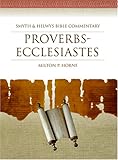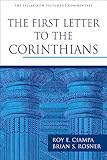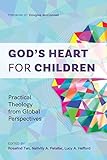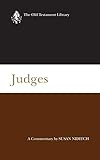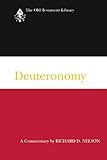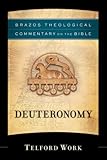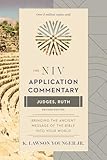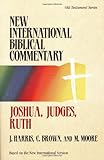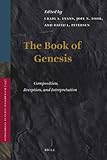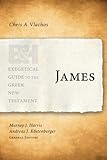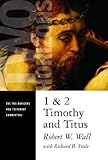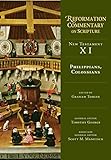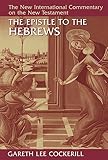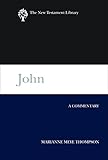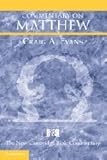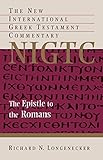Atonement, the Heavenly Sanctuary, and Purgation of Sin: An Exegetical Study of Hebrews 9
Material type: TextPublication details: Johannesburg South Africa South African Theological Seminary 2019Description: 221 pages PDF A4 Abstract, TOCDissertation note: Master of Theology (Mth) South African Theological Seminary 2019 Summary: The letter to the Hebrews is unique among its New Testament counterparts in that it is the only canonical writing to map the sacrifice of Christ upon a detailed discussion of Israel’s cultic theology. In his homily, the author pays particular attention to both the Day of Atonement and the inauguration of the old covenant and its related cultic appurtenances. These two cultic events serve as the background for the author’s theology of atonement with regard to the sacrifice of Christ. Alongside the atonement, this cultic background also informs the author’s high priestly Christology with respect to the timing of Christ’s installation as high priest. Hebrews is unique in its description of Christ with respect to his installation as high priest, building his high priestly Christology around the enigmatic Priest-King, Melchizedek. This study is a detailed exegetical study of Hebrews’ theology of the atonement, its distinctive high priest Christology, and its emphasis on purgation of the defilement caused by sin. This thesis challenges the more traditional understanding of the atonement that is common among both the scholar and the inquisitive reader of the Bible, one that is shaped more by a Pauline interpretation of the atonement than it is by the auctorial Hebrews. Rather than focusing on the death of Christ as the locus of atonement, for Hebrews, the Yom Kippur ritual supplies the theological script for the homily’s distinct theology of atonement. Just as the immolation of the sacrificial victim in Leviticus 16 is essential for accessing the blood necessary for obtaining atonement within the Holy of Holies, so also is the death of Christ necessary for the self-offering and presentation for atonement within the heavenly sanctuary. Also related to Hebrews’ cultic theology of atonement is the installation of Christ as high priest. In his midrash on the life of Melchizedek, the author of Hebrews indicates that because Christ was from the tribe of Judah, he had no authority to rightly officiate in the Temple. However, because Christ’s sacrifice inaugurated a new covenant, this necessitated a priestly regime change, one that was founded on the basis of an indestructible life. It was this indestructible life that Jesus took on at his resurrection, whereby he entered into the heavenly sanctuary and made his once-for-all-time offering for atonement, thus decisively purging the defilement of sin. The author of Hebrews has provided the Church of Christ with perhaps the most detailed and beautifully structured example of an Early Christian homily. The author proves to be a creative and well-trained orator, steeped in the Greco-Roman philosophical and educational milieu of his time. Not only was he classically trained, he was also a top-notch theologian, well-versed in both the Old Testament scriptures and Jewish worldview. What is seen in this ancient homily is the working together of the author’s Greco-Roman and Jewish heritage to produce one of the most important expositions on the atonement of Christ and his role as the great and faithful high priest.
TextPublication details: Johannesburg South Africa South African Theological Seminary 2019Description: 221 pages PDF A4 Abstract, TOCDissertation note: Master of Theology (Mth) South African Theological Seminary 2019 Summary: The letter to the Hebrews is unique among its New Testament counterparts in that it is the only canonical writing to map the sacrifice of Christ upon a detailed discussion of Israel’s cultic theology. In his homily, the author pays particular attention to both the Day of Atonement and the inauguration of the old covenant and its related cultic appurtenances. These two cultic events serve as the background for the author’s theology of atonement with regard to the sacrifice of Christ. Alongside the atonement, this cultic background also informs the author’s high priestly Christology with respect to the timing of Christ’s installation as high priest. Hebrews is unique in its description of Christ with respect to his installation as high priest, building his high priestly Christology around the enigmatic Priest-King, Melchizedek. This study is a detailed exegetical study of Hebrews’ theology of the atonement, its distinctive high priest Christology, and its emphasis on purgation of the defilement caused by sin. This thesis challenges the more traditional understanding of the atonement that is common among both the scholar and the inquisitive reader of the Bible, one that is shaped more by a Pauline interpretation of the atonement than it is by the auctorial Hebrews. Rather than focusing on the death of Christ as the locus of atonement, for Hebrews, the Yom Kippur ritual supplies the theological script for the homily’s distinct theology of atonement. Just as the immolation of the sacrificial victim in Leviticus 16 is essential for accessing the blood necessary for obtaining atonement within the Holy of Holies, so also is the death of Christ necessary for the self-offering and presentation for atonement within the heavenly sanctuary. Also related to Hebrews’ cultic theology of atonement is the installation of Christ as high priest. In his midrash on the life of Melchizedek, the author of Hebrews indicates that because Christ was from the tribe of Judah, he had no authority to rightly officiate in the Temple. However, because Christ’s sacrifice inaugurated a new covenant, this necessitated a priestly regime change, one that was founded on the basis of an indestructible life. It was this indestructible life that Jesus took on at his resurrection, whereby he entered into the heavenly sanctuary and made his once-for-all-time offering for atonement, thus decisively purging the defilement of sin. The author of Hebrews has provided the Church of Christ with perhaps the most detailed and beautifully structured example of an Early Christian homily. The author proves to be a creative and well-trained orator, steeped in the Greco-Roman philosophical and educational milieu of his time. Not only was he classically trained, he was also a top-notch theologian, well-versed in both the Old Testament scriptures and Jewish worldview. What is seen in this ancient homily is the working together of the author’s Greco-Roman and Jewish heritage to produce one of the most important expositions on the atonement of Christ and his role as the great and faithful high priest.
| Item type | Current library | Collection | Call number | URL | Copy number | Status | Date due | Barcode | |
|---|---|---|---|---|---|---|---|---|---|
 Thesis
Thesis
|
South African Theological Seminary Online Resource | Electronic Holdings | Link to Resource | 1 | Available | 0000000011426 |
Master of Theology (Mth) South African Theological Seminary 2019
There are no comments on this title.
Log in to your account to post a comment.

